I have met a emitter follower design example in the Horowitz-Hill's book (scheme is below):
And I don't understand why the resulting steps is correct:
Step 1. Choose \$V_E\$. For the largest possible symmetrical swing without clipping, \$V_E = 0.5V_{CC}\$, or \$+7.5\$ volts.
Step 2. Choose \$R_E\$. For a quiescent current of \$1 mA\$, \$R_E = 7.5k\$.
Step 3. Choose \$R_1\$ and \$R_2\$. \$V_B\$ is \$V_E+0.6V\$, or \$8.1V\$. This determines the ratio of \$R_1\$ to \$R_2\$ as \$1:1.17\$. The preceding loading criterion requires that the parallel resistance of \$R_1\$ and \$R_2\$ be about \$75k\$ or less (one-tenth of \$7.5k×\beta\$ ). Suitable standard values are \$R_1 = 130k\$, \$R_2 = 150k\$.
So, once again all known values: $$ V_{BE} = 0.6 V \\ R_1 = 130K \\ R_2 = 150K \\ R_E = 7.5K \\ \beta = 100 $$
My question is about values for \$R_1\$ and \$R_2\$. The maximum current through the divider without connected load is: $$ I_{div} = \frac{V_cc}{R_1 + R_2} = \frac{15}{280 \cdot 10^3} \approx 54 \mu A $$
When we connect emitter follower to the divider, there must be a base current \$I_B\$ that is: $$ I_B = \frac{I_E}{\beta + 1} = \frac{1ma}{100 + 1} \approx 9.9 \mu A $$
Hence we could calculate output voltage of the divider after connection of emitter follower: $$ I_{R_2} = I_{div} - I_{B} = 54 - 9.9 = 44.1 \mu A $$
Hence, we'd get a output voltage from the divider: $$ V_{div} = V_{R_2} = I_{R_2} \cdot R_2 = 44.1 \cdot 10^{-6} \cdot 150 \cdot 10^3 \approx 6.62 V $$
So, we would get a \$6 V\$ output from the emitter follower instead of expected \$7.5 V\$.
Could you tell me where I'm mistaken?
P.S.: There is also a screenshot from simulator:

